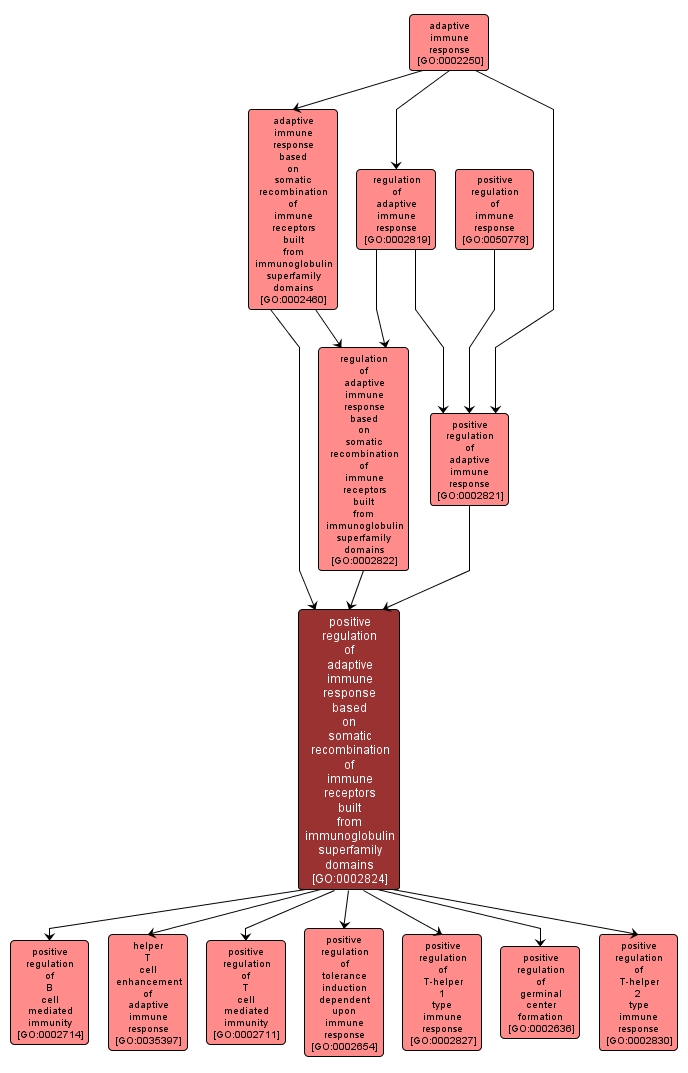GO TERM SUMMARY
|
| Name: |
positive regulation of adaptive immune response based on somatic recombination of immune receptors built from immunoglobulin superfamily domains |
| Acc: |
GO:0002824 |
| Aspect: |
Biological Process |
| Desc: |
Any process that activates or increases the frequency, rate, or extent of an adaptive immune response based on somatic recombination of immune receptors built from immunoglobulin superfamily domains. An example of this process is found in the Gnathostomata. |
|

|
INTERACTIVE GO GRAPH
|














